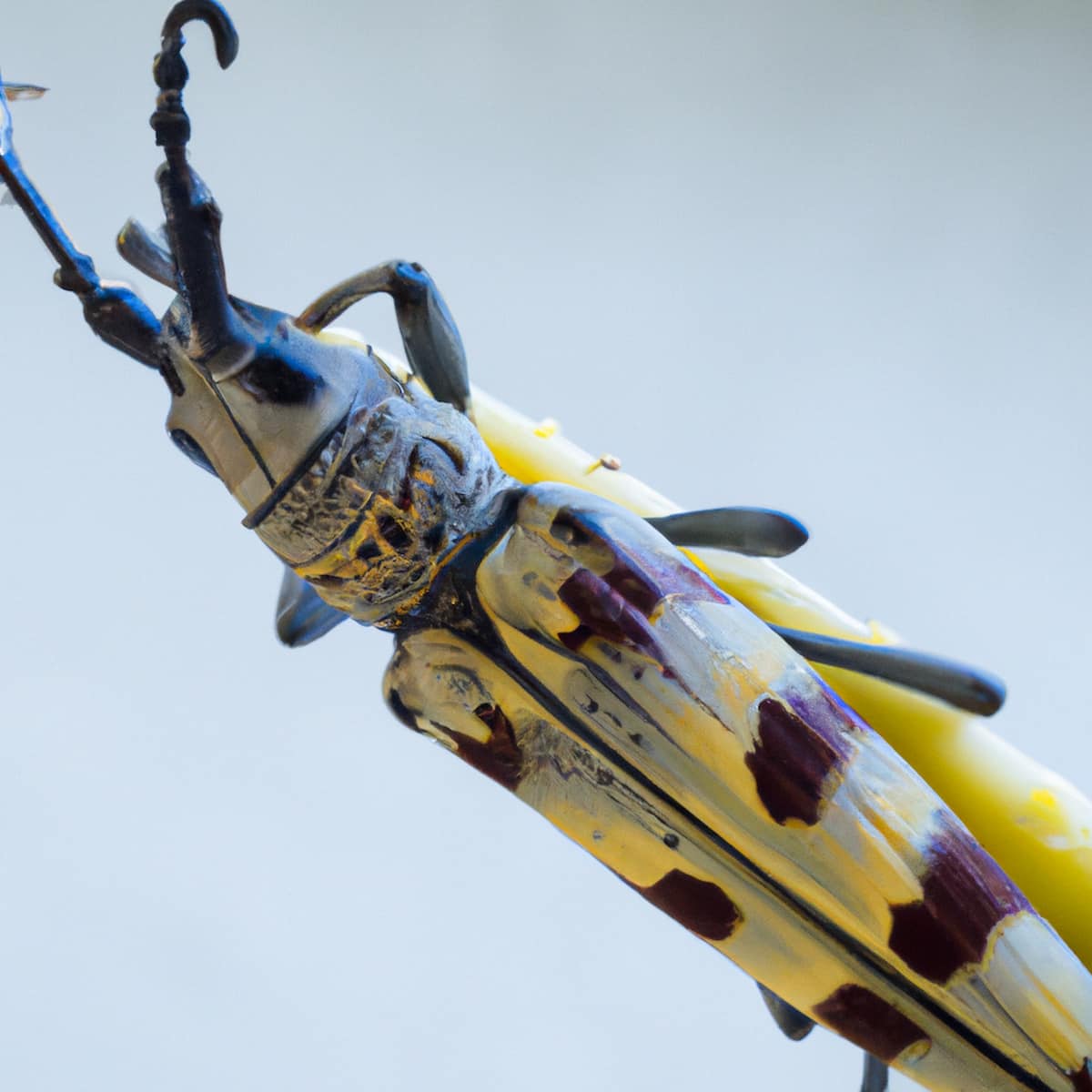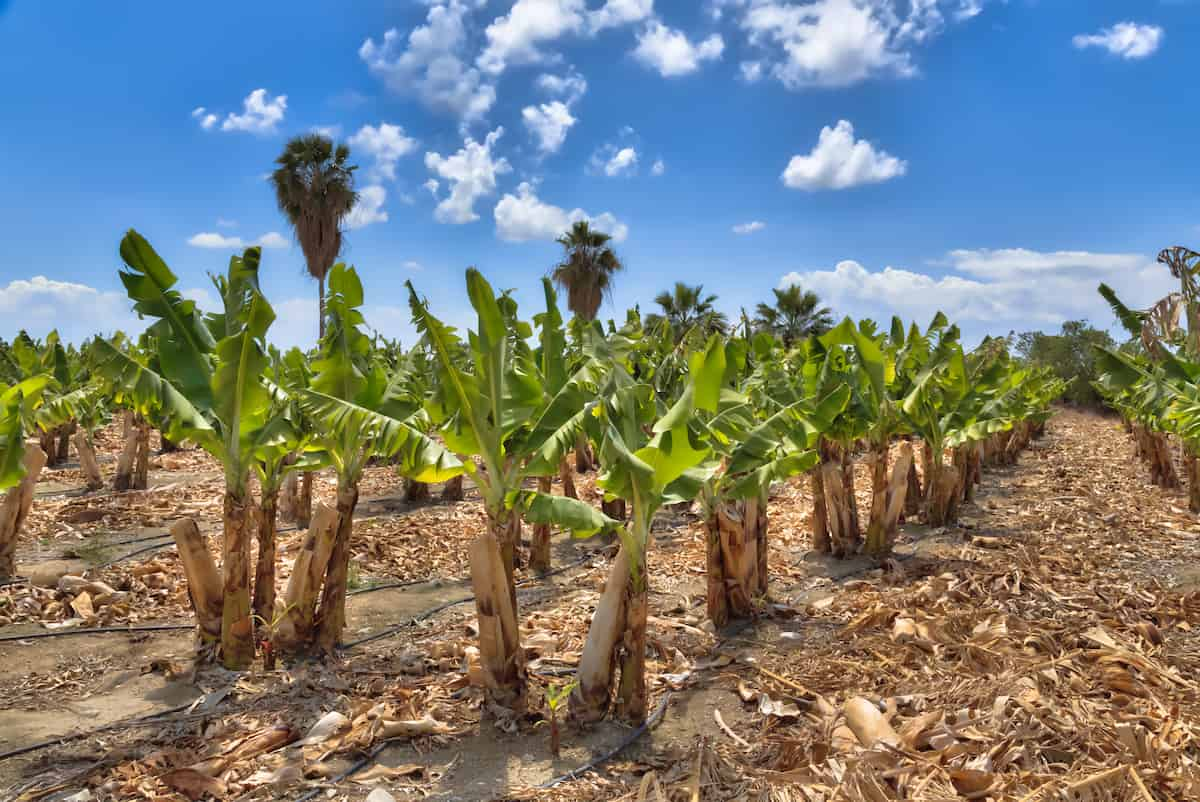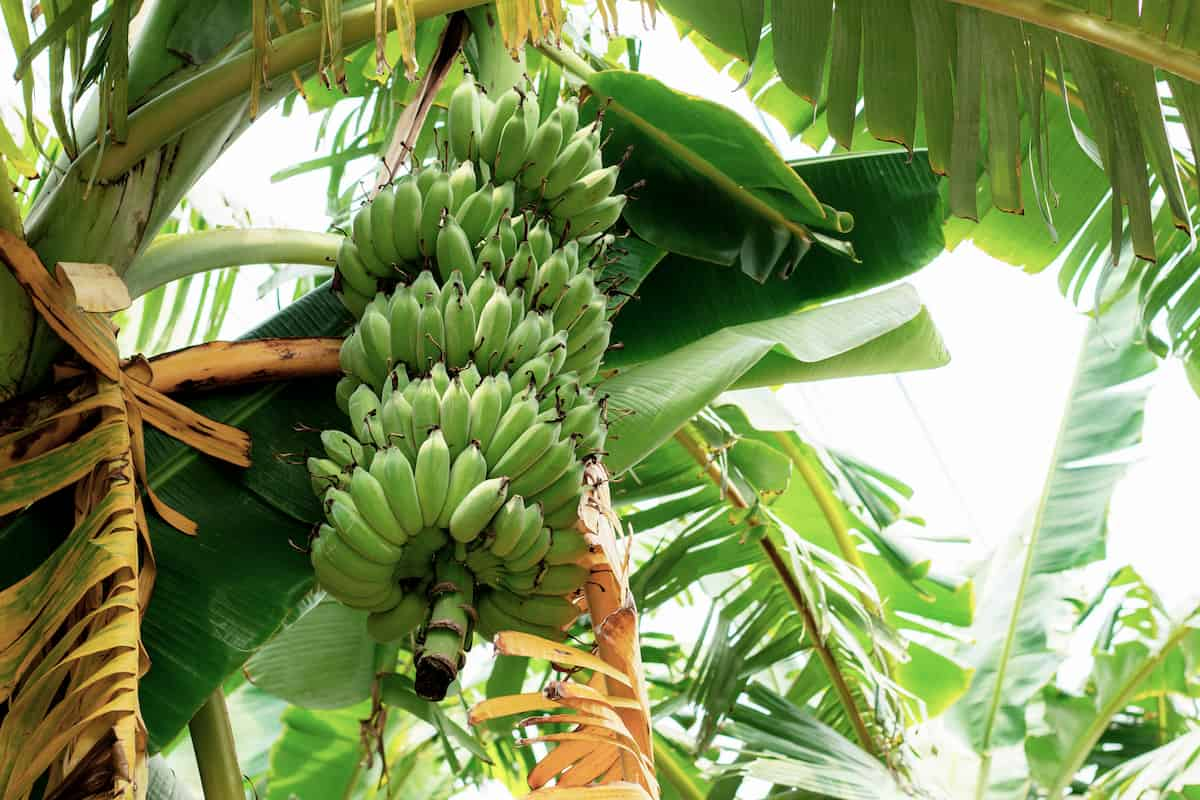The Banana Pseudostem Borer, Odoiporus longicollis, belonging to the Family Curculionidae of the Order Coleoptera, is a major pest of banana crops in several regions worldwide. The larvae bore into the banana pseudostem, causing extensive damage to the plant’s vascular system and reducing its ability to absorb nutrients and water. This ultimately leads to a decrease in yield and economic losses for farmers.

The Banana Pseudostem Borer Pest is a highly destructive pest that can cause up to 60% yield loss in affected banana crops. Effective integrated pest management approaches for the Banana Pseudostem Borer Pest are essential for the sustainability of banana production. These methods aim to reduce the pest population and minimize its impact while maintaining environmental sustainability and human safety.
To effectively manage this pest, it is important to understand its life cycle, its preferred habitats, and the best methods for controlling it. This article will provide an overview and discussion of the Banana Pseudostem Borer Pest in Banana crops, including its symptoms, identification techniques, and control.
Banana Pseudostem Borer Pest Management
Life Cycle of Banana Pseudostem Borer Pest in Banana Crop
The life cycle of the Banana Pseudostem Borer pest has four stages. They are egg, larva, pupa, and adult. The female weevil lays eggs singly or in groups of up to six on the surface of the banana pseudostem. The incubation period for the eggs is around 7 to 10 days. The larvae hatch from the eggs and bore into the banana pseudostem, feeding and developing for approximately 40 to 60 days.
The feeding activity of the larvae causes extensive damage to the banana plant’s vascular system, leading to stunted growth, reduced yield, and susceptibility to other pests and diseases. Once the larvae reach maturity, they move to the surface of the banana pseudostem and spin a cocoon. The pupa stage lasts approximately 10 to 15 days, after which the adult weevil emerges.
The weevils are active during the day and are attracted to light. The adult weevils feed on the leaves and buds of the banana plant, causing further damage to the plant. The lifecycle of the Banana Pseudostem Borer Pest is completed within approximately 75 to 85 days. The pest has several generations per year, with peak activity during the rainy season.
Occurrence of Banana Pseudostem Borer Pest in Banana Crop
- Location of Banana Pseudostem Borer pest: This pest infests Banana crops in India, Thailand, Myanmar, Vietnam, Africa, the United States, Mexico, Brazil, Colombia, Ecuador, the Philippines, and Australia.
- Host range: The Banana Pseudostem Borer pest infects crops like Bananas, Plantains, Papaya, Ginger, Sugarcane, Rice, and Pineapple.
Factors Favoring the Population Increase of Banana Pseudostem Borer Pest in Banana Crop
- The pest thrives in warm and humid environments, with temperatures between 25°C and 30°C and high relative humidity levels.
- Poor crop management practices, such as inadequate pruning, improper sanitation practices, over-irrigation, and over-fertilization, can weaken banana plants, making them more susceptible.
- The pest prefers soils with high organic matter content, typical of banana plantations. These soils provide the ideal conditions for the pest’s development and reproduction.
- Improper pesticide use can harm beneficial insects that help control the pest’s population, leading to increased infestations.
Identification of Banana Pseudostem Borer Pest in Banana Crop
- Eggs: The eggs are oval-shaped, approximately 2 mm long, and pale yellow.
- Larvae: The larvae are white, have a soft body, and can grow up to 6 cm long.
- Pupae: The pupa is brown and oval-shaped, measuring approximately 2 cm long.
- Adults: The adult weevil of this pest is approximately 2 cm long, metallic green or bronze color, and has a long neck.
In case you missed it: Mango Gummosis Disease Management: Symptoms, Treatment, Chemical, Biological, Natural, and Organic Control

Damage Symptoms of Banana Pseudostem Borer Pest in Banana Crop
- The grubs drill holes and tunnels inside the pseudostem.
- The cutting holes can be observed on the outer surface of the plant.
- Later, oozing of the plant sap and dark mass from the holes will occur.
- The tunnels made by the pest will decompose and causes wilting of the plants.
Percentage of Yield Loss in Bananas Due to Banana Pseudostem Borer Pest
- In India, the yield losses due to Banana Pseudostem Borer pests are 20-70%. In Thailand, the percentage of yield loss is 20-50%. In Myanmar, the losses are 30-60%. In Vietnam, the losses are 20-80%. In Africa, it is 20-90%. In Mexico, it is 10-50%. In Brazil, it is 10-70%.
- In Colombia, the losses are 20-60%. In Ecuador, it is 30-60%. In the Philippines, the yield losses are 20-80%. The Economic Threshold Level (ETL) for the Banana Pseudostem Borer pest is set at 10-15% crop infestation.
Cultural Control of Banana Pseudostem Borer Pest in Banana Crop
- Rotating the banana crop with other non-host crops such as maize, beans, or groundnuts can help to break the pest’s lifecycle and helps to maintain soil fertility, and reduce pest build-up.
- Prune the suckers regularly and remove dried leaves, suckers, and other plant debris.
- Practice good sanitation practices, such as cutting off the affected part of the pseudostem, crushing the eggs, burning or burying the infested plant parts, and regular disinfecting of pruning tools and equipment.
- Trap Crops such as marigolds and sunflowers can be planted around the banana crop to divert the pests to the trap crops.
- Place light traps in the field to attract the adults away from the crops.
- Place longitudinally split pseudostems in the field to reduce the pest severity.
Biological Control of Banana Pseudostem Borer Pest in Banana Crop
- Predatory insects such as ants, spiders, and ground beetles can feed on pests’ eggs and larvae, reducing the pest population.
- Some birds, such as mynahs and sparrows, feed on adult beetles.
- Parasitoids like Wasps, Tetrastichus hagenowii, and Oomyzus sokolowskii lay their eggs inside the pests’ larvae, which hatch and feed on the pest.
Chemical Control of Banana Pseudostem Borer Pest in Banana Crop
- Spray insecticides on the crops like Imidacloprid, Thiamethoxam Chlorpyrifos, Carbaryl, and Cypermethrin.
- Fumigation – Apply gases like methyl bromide to the soil around the banana plants to kill the larvae.
- Injection – Inject Monocrotophos into the pseudostem at 30-day intervals from the fifth to eighth month from planting.
Organic Control of Banana Pseudostem Borer Pest in Banana Crop
- Plant extracts from neem, garlic, ginger, turmeric, and chili can be applied to manage the infestation.
- Biopesticides like Beauveria bassiana fungus, Trichoderma fungus, and Bacillus thuringiensis bacterium can be used to control this pest.
Preventive Measures for Control of Banana Pseudostem Borer Pest in Banana Crop
- Plant healthy and resistant banana cultivars.
- Planting at the start of the rainy season, when the soil is moist, and the temperature is moderate, can help reduce the incidence of infestations.
- Monitor the crops regularly to identify pest infestation in the early stages to keep it under control.
- Pheromone traps can help to monitor the pest population and help detect infestations early.
In case you missed it: Mango Dieback Disease Management: Symptoms, Treatment, Chemical, Biological, Natural, and Organic Control

Conclusion
The Banana Pseudostem Borer Pest, Odoiporus longicollis, is a destructive pest that causes significant damage to banana crops. Integrated Pest Management approaches combining cultural, biological, and chemical controls to manage this pest are effective and efficient. By employing these pest management strategies, farmers can protect their banana crops from damage caused by this pest and ensure a healthy and profitable harvest.
- Beneficial Insects in Pest Management
- Natural Solutions for Pest Control in Flower Gardens
- Types of Fungicides Used in Agriculture
- Common Issues in the Fruit Development Stage of Pomegranate Farming
- Fruit Development Issues in Papaya: Easy Solutions and Treatment
- Soil-Borne Diseases and How to Protect Your Plants
- Practices to Prevent Disease Spread in the Garden
- From Wilted to Thriving: How to Treat Root Rot Naturally in Houseplants
- Natural Remedies to Cure Brown Spots on Fig Tree Leaves